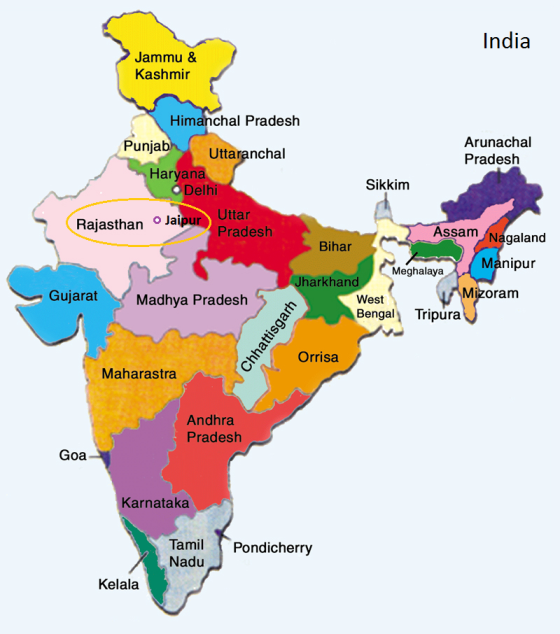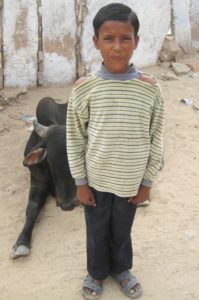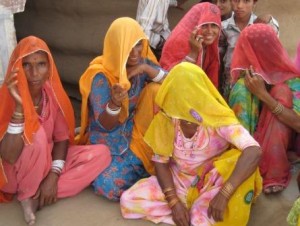Where we work
Narangi supports education projects in India. We currently work with several projects in Jaipur, the capital of the state of Rajasthan.

India
India is one of the world’s emerging economic superpowers. Despite the global financial crisis, the economy in India is still growing rapidly. India is the world’s fourth largest economy in terms of purchasing power parity (PPP). India has fifty-five billionaires, among the top 10 of the world’s wealthiest are two Indians.
However, unfortunately the vast majority of the Indian population does not benefit from the increased prosperity. India is still home to roughly one-third of the world’s poor. Economic and social inequality is high. There are large gaps between rich and poor regarding income, access to basic services, job opportunities and human development. One of the root causes of poverty in India is the caste system.  Although officially outlawed in 1949, it is still deeply rooted in society, and impedes the poor from participating in the growth process. Besides, corruption has eaten into all aspects of Indian life. Preventing the poor from getting what they are legally entitled to, while the rich are becoming richer.
Although officially outlawed in 1949, it is still deeply rooted in society, and impedes the poor from participating in the growth process. Besides, corruption has eaten into all aspects of Indian life. Preventing the poor from getting what they are legally entitled to, while the rich are becoming richer.
India has a fast growing and young population. Over one-third of all Indians are under the age of 15. Many children live in difficult circumstances. India has the largest number of child labourers in the world, and one-third of the world’s malnourished children.
Jaipur and Rajasthan
Jaipur (popularly known as the Pink City) is the capital of the state of Rajasthan, in north west India. Rajasthan is the largest state of India. It is famous for its magnificent forts and palaces, maharajas, the dessert, and its exotic colours.
Like the whole of India, the city of Jaipur has two sides: it has prosperous handicrafts and tourism industries, yet also sprawling slums and acute poverty. Jaipur is one of the fastest growing metropolitan cities in India. This attracts poor people from rural areas to migrate to the urban setting of Jaipur, in search of a better life. However, the influx of migrants is creating a new urban poor. Most of these people end up living in very bad conditions, in illegal settlements and slums.
The literacy rate in Rajasthan is the third lowest in the country. At least 33% of the population over age 15 can’t read or write. Nearly half of all women in the state are illiterate.
India in numbers
- Population: 1.24 billion. In 2025 India (with 1.46 people) will have overtaken China as the world’s most populous nation.
- Size: 3.28 million square kilometres (about 80 times the size of The Netherlands).
- At least 26% of the population over age 15 (257 million people) is illiterate.
- 42% of the population lives on less than USD 1.25 per day, which is below poverty line.
- 44% of children under 5 suffer from malnourishment.
- 2 million children under 5 die each year, one every 15 seconds: the highest child mortality rate in the world. Most of these children die from easily preventable causes, like diarrhoea.
- 20% of children aged 6 to 14 do not go to school.
- Population Rajasthan: 68.6 million.
- Population Jaipur city: 3 million.
Sources of figures mentioned on this page: Census of India 2011, UNESCAP, Unicef, IFPRI, Worldbank, Forbes, and Government of Rajasthan.




